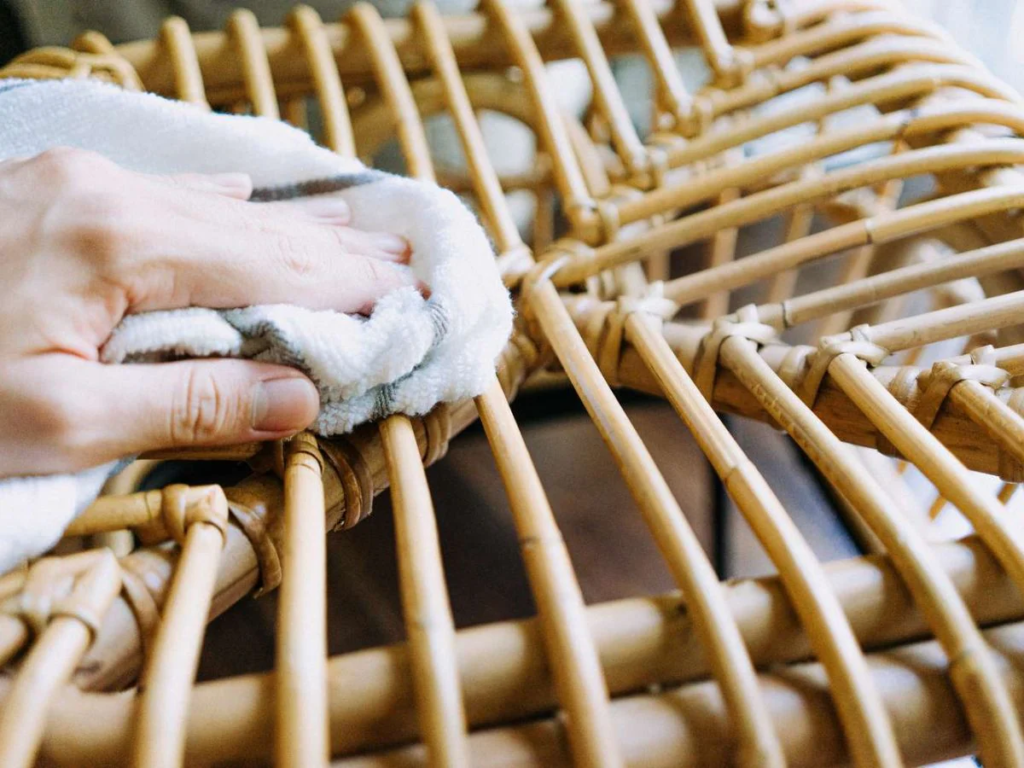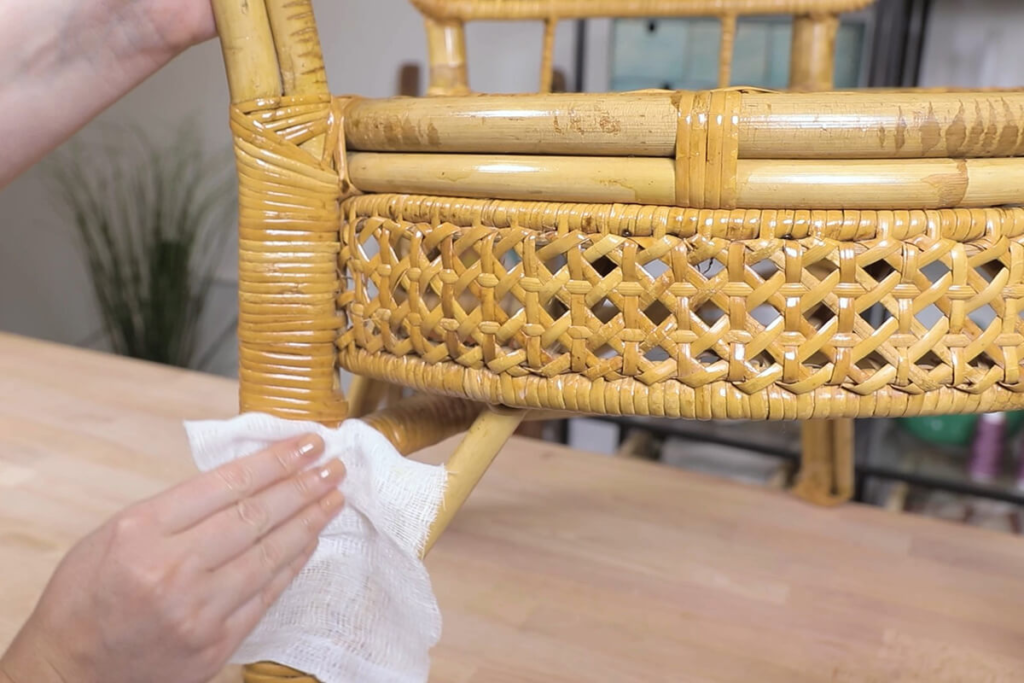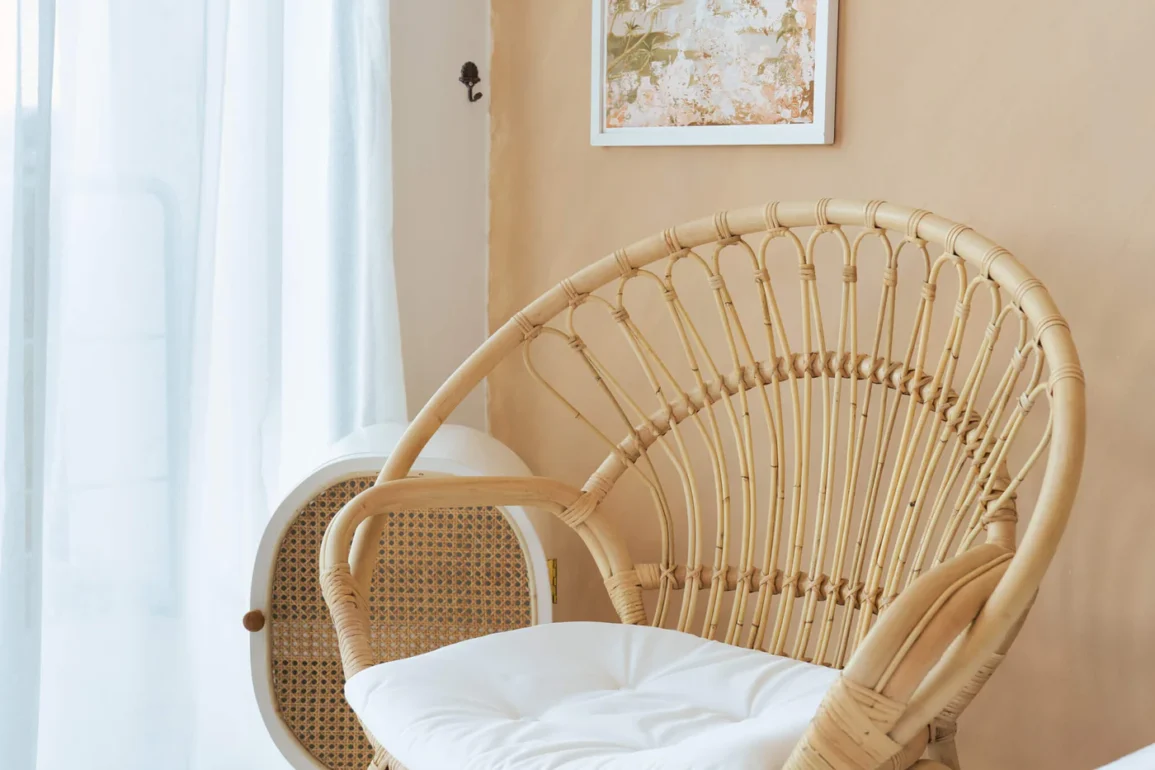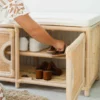Rattan’s natural warmth and texture bring instant charm to any room. As designer Summer Thornton puts it, “Rattan gives instant relaxation to a room…[It] conjures up fantasies of languid summer afternoons.” But here’s the thing—behind that effortless beauty is a material that thrives with just a bit of love. It’s not high-maintenance, but it’s not indestructible either. With the right kind of care, your woven pieces can age gracefully and beautifully, telling a richer story with each season.
This isn’t just about preserving your rattan furniture. It’s about extending the life of something that makes your home feel more human. This guide is for the readers who appreciate texture, care about sustainability, and want their homes to age as intentionally as they do. Let’s dig into the real how-to—and the real why.
Cleaning Rattan Furniture (Natural vs. Resin)

Natural rattan, made from the inner core of climbing palms, is beautiful but porous. It attracts dust like a magnet, and if you let that settle, your furniture quickly starts looking tired. A light vacuum or a soft brush gets the surface dust off, but it’s the deeper grime that slowly erodes the piece’s glow.
When you clean rattan furniture, think of it like skincare. Gentle soap, warm water, and soft tools. Work in sections—not because it’s finicky, but because the weave needs to stay supported and dry. If you soak the whole piece, you risk warping the frame or weakening the strands. Patience really does preserve integrity here.
For mildew (yes, it happens), vinegar is your best friend. One part vinegar to four parts water, applied with a cloth, not a sponge, to avoid pushing more moisture into the weave. Rinse lightly, and always dry it out with good airflow—never sunbathe a wet rattan chair.
Now, resin rattan? That’s your low-maintenance cousin. Made of plastic composites, it loves soap, water, and even a gentle hose-down. Just don’t overdo it with bleach or abrasive scrubs. Even synthetics have their limits, and over-cleaning can lead to brittleness and fade.
Location, Location, Location: Indoors vs. Outdoors

Let’s talk environment. Rattan’s relationship with its surroundings is like that of a plant. It doesn’t mind sunlight—but too much, and it dries out. It needs air circulation—but not damp corners. Indoors, keep it away from direct heat or dry air. A rattan piece beside a fireplace is like putting linen next to an open flame. Don’t.
If your space is dry, mist the back of the rattan occasionally with a solution of water and oil-based soap. Let it air-dry naturally. This keeps the fibers pliable, especially in air-conditioned rooms.
Outside, resin rattan reigns. It can sit through sun, wind, and even the occasional drizzle, but never leave any rattan—natural or synthetic—in standing water or open rain. Elevate your rattan furniture. Use covers. Think of them like raincoats for your weave. And when the season ends, store them somewhere dry and clean. Winter is no friend to even the hardiest of woven pieces.
When Things Fray: Repair Your Rattan Furniture with Intention

Fraying isn’t a death sentence. It’s a sign of use—a bit like smile lines on a well-lived face. The key is to catch them early. If you spot a strand pulling free, trim the fuzzy ends with small scissors and tuck it back into the weave. A tiny dot of clear wood glue can seal the repair. Do it with care. This is craft, not combat.
If your piece is cracking from dryness, oil it. Linseed or tung oil revives tired fibers. Let it soak in, wipe off the excess, and give it a few hours to settle. It’s not just about aesthetics—you’re feeding the material, keeping it supple and functional.
Bigger issues like sagging can be slowed with good habits. Always use cushions on cane seats to distribute weight. That way, you’re not overloading the weave in one spot, which causes premature stretching.
Long-Term Love: Light, Air, and Seasonal Rhythm
The secret to keeping rattan looking and feeling good is rhythm. Rotate it. Shift it out of direct sun every few weeks. Use curtains during peak daylight hours to prevent uneven fading. Let it breathe, but don’t blast it with cold or dry air.
Wipe it down monthly with a damp cloth. Do a deep clean twice a year. If it looks thirsty, give it a coat of oil. If it looks dull, lemon oil brings back the glow—but test a patch first. Painted or treated rattan doesn’t always play well with oils.
Spilled wine or muddy paw prints? Don’t panic. Just act fast. A cloth with soapy water or diluted vinegar can lift most stains before they set. And remember: drying well is as important as cleaning thoroughly.
What to Do When It’s Time to Let Your Rattan Furniture Go
Maybe the chair you loved has started to splinter beyond repair. Or that outdoor sofa just isn’t making the cut in your new home. Don’t toss it without a thought.
Try repurposing first. Could the frame become a plant stand or garden trellis? Could you use the intact cane panels in a DIY project? Even worn pieces hold potential.
If not, donate. Local thrift stores, charities, or artists might breathe new life into it. And because rattan is biodegradable, check with your local recycling centre. Many accept natural wood furniture for compost or mulch.
There’s something poetic about giving your furniture a second life. It reflects the very nature of rattan itself—resilient, renewable, and real.
In the end, caring for rattan is less about preservation and more about partnership. It’s a material that evolves with you. It softens, it weathers, and it carries the patina of memory. With a little thought and a lot of heart, it can become one of the most enduring things in your space—not just because it lasts, but because it mattered.


